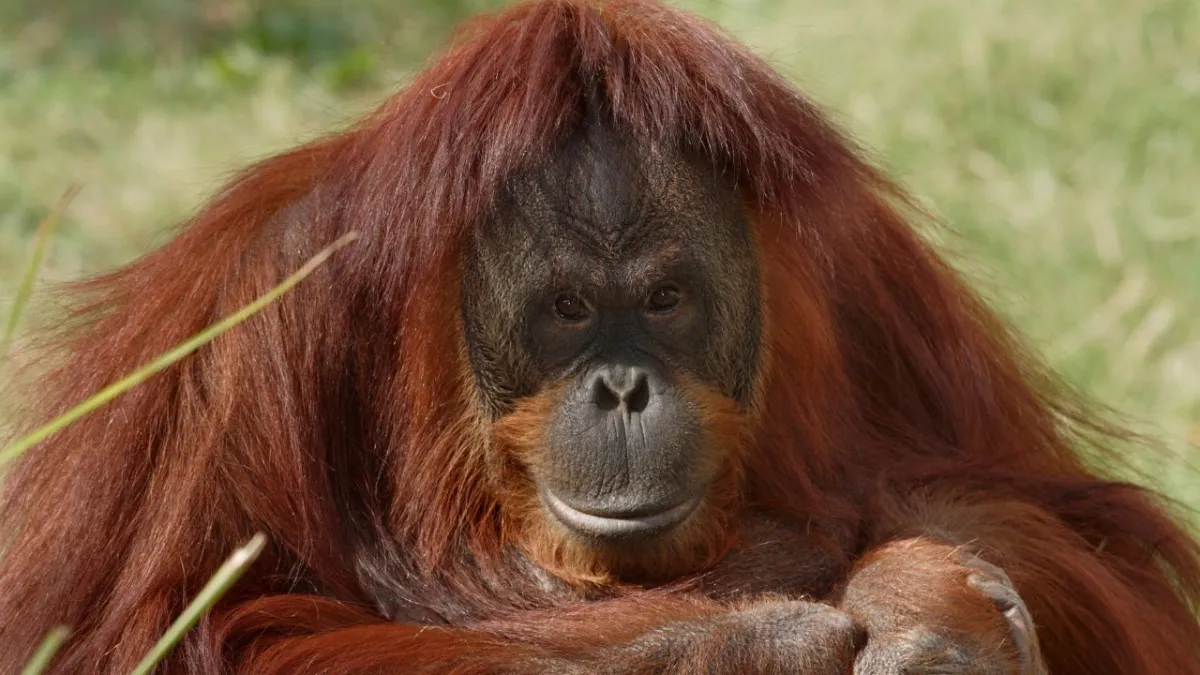
The great apes are a group of primates that includes gorillas, chimpanzees, bonobos and orangutans. These animals are characterized by their large size, the absence of a tail, and a greater brain-body ratio compared to other primates. Great apes are known for their intelligence, ability to use tools, and complex social behaviors.
In addition, they have an anatomical structure more similar to that of humans, which makes them especially interesting for the study of evolution and human behavior. These primates are mainly found in Africa and Asia. Gorillas and chimpanzees live in various regions of Africa, while orangutans are found on the islands of Borneo and Sumatra.
In a new study published in the journal PLOS Biology, a group of scientists has identified a cognitive ability in great apes that could be the key to the development of complex, human-like language. Research suggests that there could be deep reasons behind the lack of motivation or resources necessary for more sophisticated communication by these primates.
(You can read: Revenge of the Apes?)
Pixabay
Great Apes Have Good Cognitive Ability
Great apes, such as gorillas, chimpanzees, and orangutans, have demonstrated a cognitive ability until now considered exclusive to humans: the ability to distinguish between the “agent” and the “patient” in the events they observe. This process, known as event decomposition, allows humans to identify who performs an action and who receives it, something essential for the formation of the syntactic structure of any language.
The study carried out by Vanessa Wilson and her team of researchers showed that apes, like humans, focus on these two elements when observing interaction scenes, suggesting that they have the ability to perceive events in a similar way to how we would when structuring sentences or stories.
The decomposition of events is fundamental to understanding how we construct language. This mechanism allows us to analyze the interactions between the beings that participate in an action, an essential basis for human syntax. However, although apes can identify these roles, the leap towards a complex language seems to have not occurred in their evolution.
Apes could be unmotivated
The researchers suggest that a lack of motivation could be a crucial factor in the absence of structured language in apes. Unlike human beings, who have a constant need for complex communication due to their social and cooperative evolution, Great apes do not seem to have the same social pressure as humans to develop such a complex communication system.

It is possible that, although they possess the necessary cognitive abilities, they do not have the evolutionary motivation or the social resources to promote human-like language. A possible explanation for this difference lies in the evolution of human cognitive abilities. Throughout our evolution, increased brain size and the need for greater social cooperation could have been key factors in the development of complex language.
Humans also have considerably larger brains than apes, which could have facilitated the creation of more complex cognitive structures necessary for the formation of language. Social and cognitive pressures in early humans may have driven a “feedback” between the need for greater communication and brain size.
They have complex forms of communication
The study also mentions that apes and other animals have complex forms of communication, but that these do not reach the levels of complexity of human languages. Apes, for example, communicate with each other through vocalizations and gestures, and although these interactions can be strikingly human-like, they lack the grammatical structure that characterizes language. The researchers propose that although apes have the cognitive ability to decompose events, They don’t feel the need to do it in their social life, which limits the development of more sophisticated communication.
As to why early humans began to communicate more complex concepts, scientists suggest that the need to cooperate and work together in more complex ways could have been the driving force that led to the evolution of a language. While animals communicate about specific things like food or danger, humans went further, communicating about interactions between various elements and constructing complex stories through language.

Pixabay
(You may be interested in: Colombian apes give birth to a baby in Mexico)
Human language is advanced
In addition to these questions about apes, the study raises a deeper question about human language itself. What really differentiates our way of communicating from that of other animals? One of the aspects that distinguishes human language is compositionality, the ability to combine words with individual meanings to create new combinations. that generate new meanings. This phenomenon has been found in some animals, but in a much simpler and more limited way, such as the combination of two calls or gestures.
Another unique aspect of human language is recursion, the ability to form complex hierarchical structures within sentences. This ability allows you to create infinite sentences and expressions from a limited number of elements. In the case of apes, although there are simple forms of recursion in their communication, they do not reach the levels of complexity that allow the creation of completely structured languages.
Source: https://www.noticiascaracol.com/mundo/los-grandes-simios-tienen-todas-las-capacidades-de-crear-su-propio-lenguaje-segun-estudio-so35


